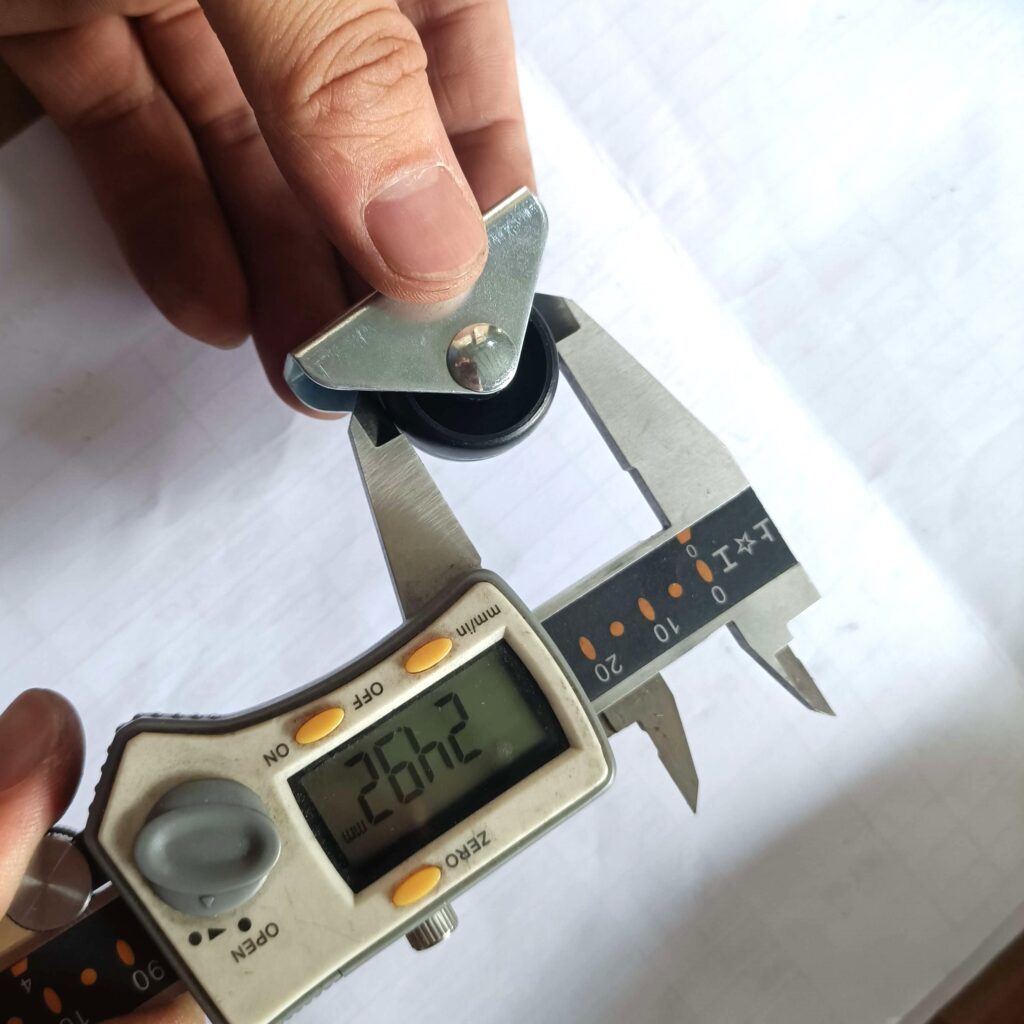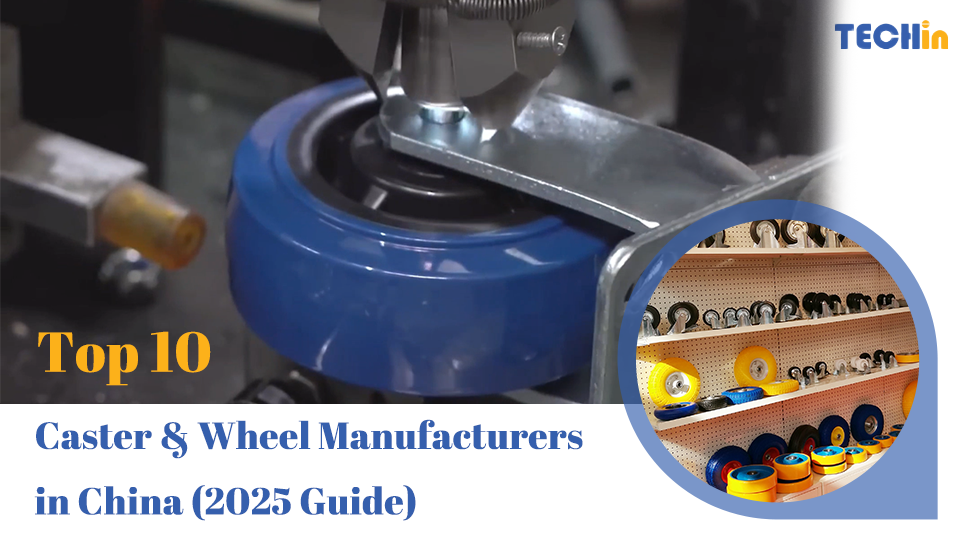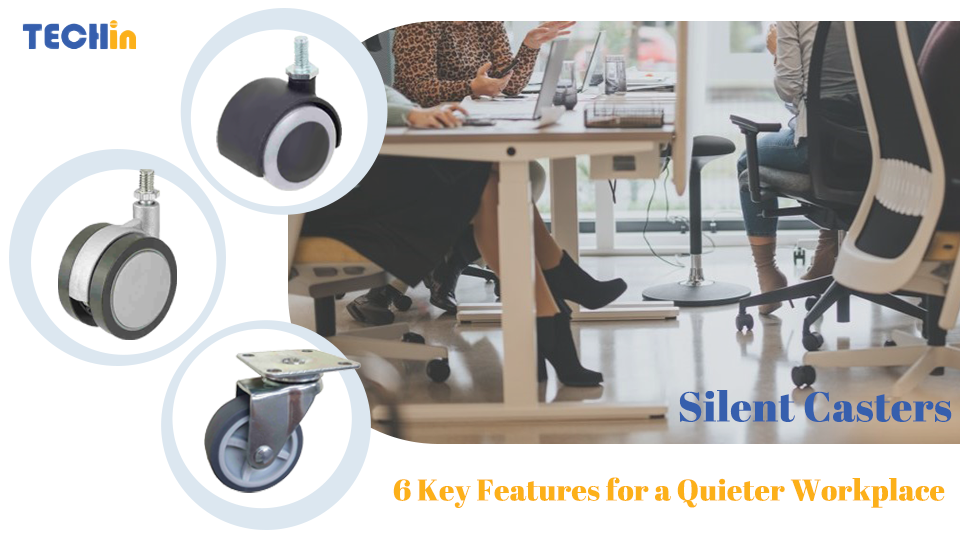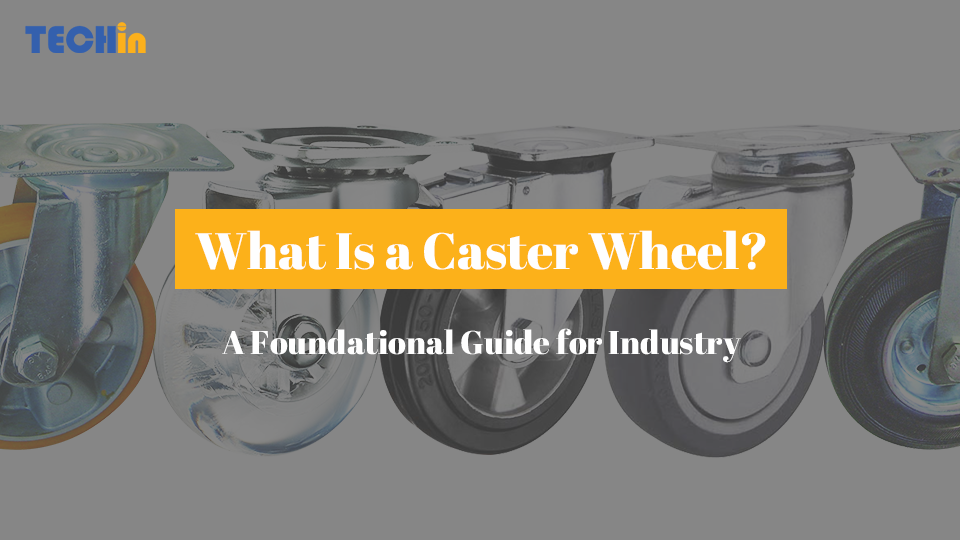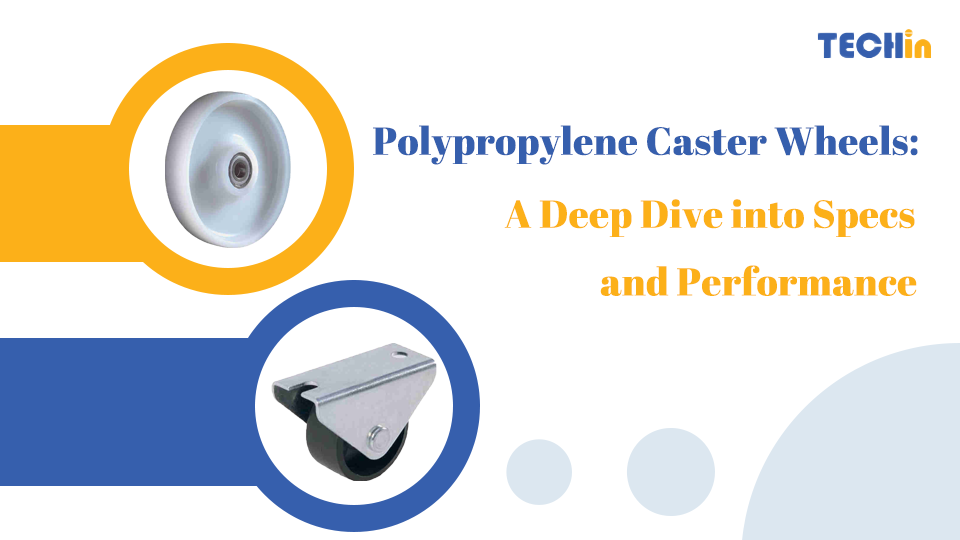Casters are pivotal in an array of applications, providing mobility to furniture and heavy industrial equipment alike. The right caster size is critical for the appropriate support, maneuverability, and longevity of your equipment. This article breaks down the most common caster sizes and their specific uses in various industries.
Introduction to Caster Sizes
Casters come in various sizes for different applications, ranging from small furniture pieces to large industrial machinery. By examining caster sizes closely, we can better understand their roles and the importance of selecting the right size for specific requirements.
Small-Sized Casters (1”- 3”)
Small-sized casters are a popular choice for applications that require subtle mobility solutions. In the 1 inch to 3 inch size range, they’re not just functional; they can also be aesthetically pleasing and complement the design of the item they’re attached to. Let’s delve into the specifics of these casters.
Architectural Casters
Architectural casters are the stylish cousins in the caster family. Typically, these casters are designed with a modern look to enhance the visual appeal of the furniture they’re fitted to.
Applications:
- Designer furniture items, such as contemporary chairs and tables that require both mobility and a touch of elegance
- Architectural panels or partitions used in office or exhibition spaces that must be easy to reposition without compromising their sleek appearance
Office Furniture Casters
Office furniture casters are all about providing smooth mobility without being obtrusive. They are common in workspaces and support the dynamic needs of a busy office.
Applications:
- Swivel chairs that need to rotate and glide with ease across the office floor
- Mobile pedestals or filing cabinets that require frequent access and should be moved without noise or damage to flooring
Light Equipment Casters
When it comes to light equipment, small-sized casters play a crucial role in enhancing portability and user-friendliness.
Applications:
- Medical stands or small machines that healthcare workers need to transfer from room to room
- Portable AV equipment that must be moved among different venues or rooms quickly and quietly
- Kitchen trolleys or bar carts used in hospitality settings that need to transport items efficiently and elegantly
Despite their small size, these casters are mighty in functionality. They’re engineered to provide ease of movement while also catering to the specific demands of the application, such as load-bearing capacity, floor protection, and low noise operation. Whether for aesthetic purposes or practical use, small-sized casters are an essential component for enhancing the versatility and function of light furniture and equipment.
Medium-Sized Casters (4” – 6”)
Medium-sized casters offer a good balance between load capacity and maneuverability. They are sturdy enough to handle substantial weight yet remain flexible enough for a variety of applications. Let’s examine the roles of medium-sized casters in different settings.
Commercial Casters
Commercial casters are essential in environments that require furniture or equipment to be highly mobile and resilient. These casters are designed to handle frequent use and can navigate over different indoor surfaces with ease.
Applications:
- Rolling beds in hospitals that need to be moved carefully and comfortably while carrying patients.
- Food service carts in hotels and restaurants, delivering meals and supplies through halls and into elevators.
- Utility carts in office buildings, schools, and libraries that are used to transport books, mail, supplies, and equipment.
Industrial Platform Casters
These are the workhorses in the caster family, made to withstand rigorous use in the most demanding environments. Industrial platform casters are chosen for their strength and durability.
Applications:
- Platform trucks in warehouses, moving large volumes of goods across long stretches of the warehouse floor.
- Workbenches in assembly lines or workshops, which must remain stable while allowing mobility when needed.
- Dollies that are used to transport heavy equipment and machinery within a factory setting.
Automotive Cart Casters
Automotive cart casters are specifically designed to cope with the heavy, bulky items often moved around in automotive work environments. They are built to resist the wear and tear of a garage or assembly line, often featuring a design that guards against the infiltration of dirt, debris, and chemicals.
Applications:
- Mechanics’ tool chests that must be moved close to a vehicle or workstation, carrying heavy tools and parts.
- Parts bins or carts carrying automotive components through different stages of production or maintenance.
- Custom transport carts used to move tires, engines, or other hefty automotive parts within an auto shop or during manufacturing.
Medium-sized casters are an ideal solution when the tasks at hand fall between light-duty and heavy-duty requirements. With various wheel materials available, such as polyurethane, rubber, or thermoplastic, they can also be optimized for specific floor conditions and noise reduction requirements, providing a practical mobility solution that doesn’t sacrifice performance.
Large-Sized Casters (8” and Above)
Large-sized casters are engineered to carry heavy loads and offer unmatched durability in industrial applications. These robust casters can range from 8 inches in diameter and above, providing the necessary support for massive weights while ensuring ease of movement.
Heavy-Duty Industrial Casters
Heavy-duty industrial casters are built to withstand the tough conditions and high demands of industrial environments. They can support thousands of pounds while permitting controlled and smooth movement of heavy machinery.
Applications:
- Industrial machinery that requires easy transport within facilities, like metalworking or woodworking machines.
- Large containers and shipping crates that need to be moved around in manufacturing plants or docks with considerable cargo weight.
- Automated guided vehicles (AGVs) used in factories for the transportation of materials and products across large distances.
Aerospace and Ground Support Casters
Aerospace and ground support casters are specialized for the high-performance requirements of the aerospace industry. They must support the extreme weights of aerospace equipment and harsh operating conditions.
Applications:
- Ground support equipment used to transport airplane parts or maintenance tools across the tarmac.
- Engine stands and large tooling fixtures that hold and move heavy aerospace components in assembly and repair operations.
- Cargo loaders and transporters that carry large and heavy freight to and from aircraft.
Casters for Large Machinery and Equipment
In agriculture, construction, and other heavy industries, large machinery relies on these casters to improve mobility without sacrificing stability.
Applications:
- Construction equipment such as mobile cranes, concrete mixers, or earthmovers that require movement within job sites.
- Heavy agricultural equipment like mobile irrigation systems or large harvesters that need occasional repositioning.
- Large-scale industrial fans, generators, or pumps that, while mostly stationary, may require relocation for maintenance or operational changes.
The performance of large-sized casters is critical for safety and efficiency in heavy-duty applications. Features such as reinforced steel structures, high-capacity bearings, and impact-resistant wheel materials are common. Additionally, options for swivel lock, wheel brake, and custom mounting configurations can be included to meet specific operational requirements.
The functionality of such casters is crucial not only for the transportability of heavy loads but also for the protection of floors, ease of handling, and ultimately for reducing the physical strain on operators. With the right large-sized casters, even the heaviest and bulkiest loads can be managed with a degree of precision and safety.
Special Considerations for Caster Size Selection
Selecting the appropriate caster involves more than just considering the weight it needs to carry. Factors such as floor conditions, environmental factors, and operating speed are also vital in choosing the correct caster size.
Conclusion
With the wide variety of caster sizes available, it’s important to understand the common types and their applications to select the most suitable option for your needs. Whether it’s for a delicate piece of furniture or rugged industrial use, the proper caster size will ensure optimal performance and longevity.
Keep these points in mind as you assess your caster needs to ensure seamless operations and prolonged durability of your equipment and furniture.

